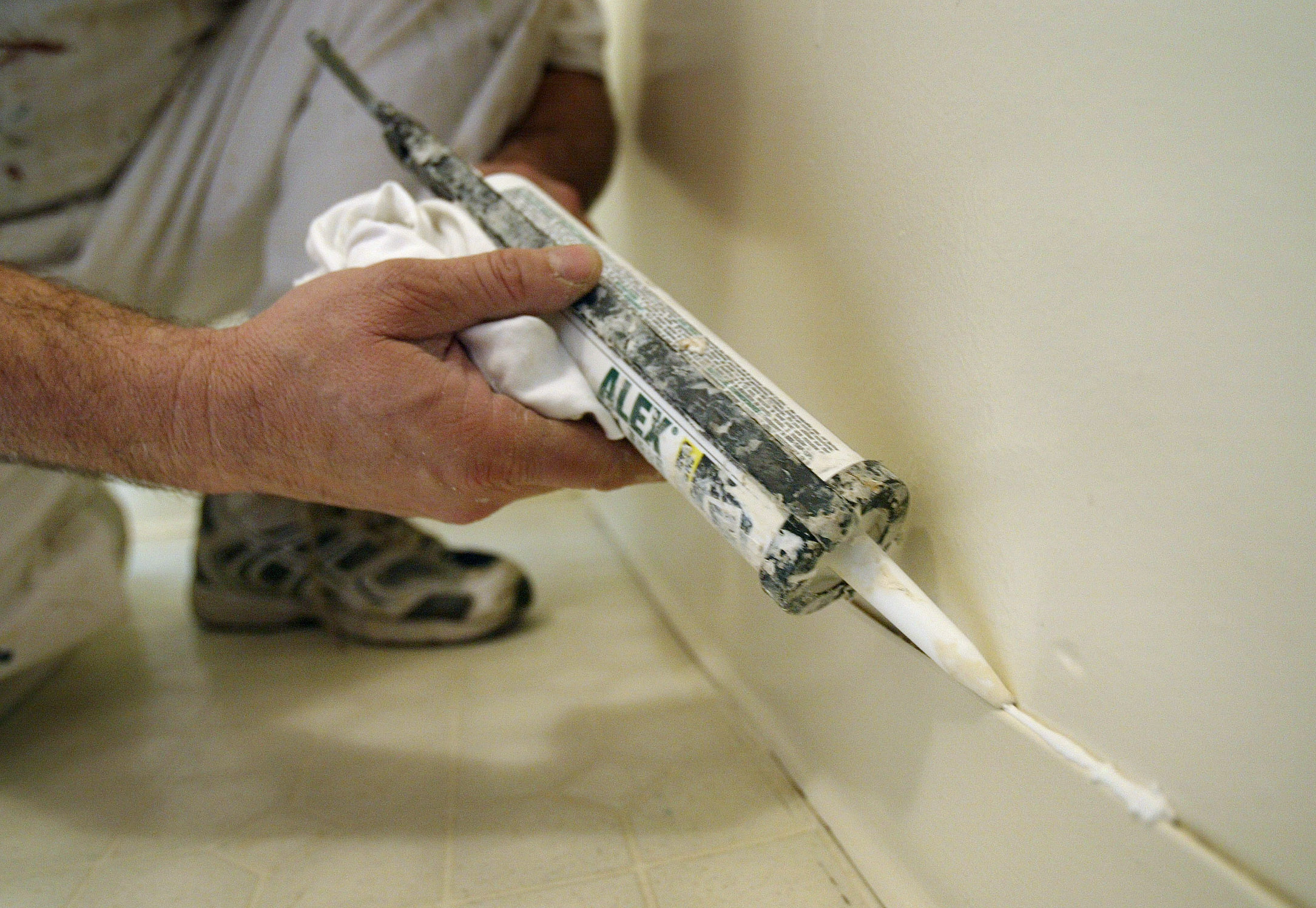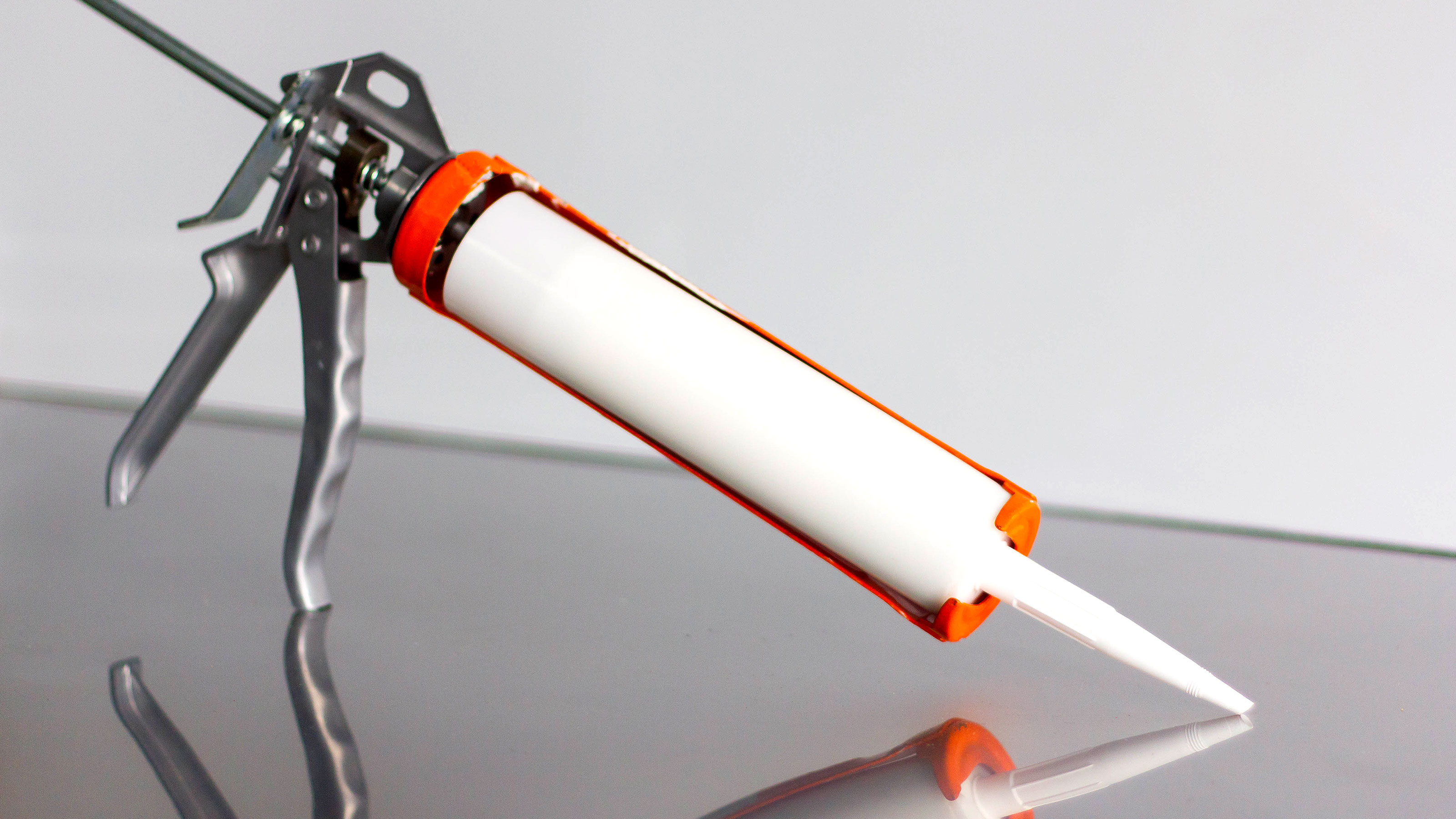5 caulking tools a wise DIYer should always have in their toolbox
Caulking tools are a must-have extra for making sure that your sealant looks good and works effectively

When caulking you need the right caulking tools to make sure you get a slick, smooth professional finish. For instance, the one tool you cannot do without is a caulking gun. If you don't have one you simply won’t be able to apply any sealant.
Investing in additional caulking tools is a wise move for DIYers, especially those who are new to caulking. They help keep your sealant in good condition and give a variety of finishes. Here we look at the different tools you need to add new sealant, get rid of old and get a great finish.
Caulking tools: The kit you need for better caulking
There is an art to applying and removing caulk and silicone sealant. Here we look at the tools to help apply, remove and finish the job
1. Caulking gun
When using a sealant a caulking gun is the key component that will get it wherever it needs to go. If you are an occasional caulker you can purchase a basic gun like the ProDec Extra Strong Skeleton Caulking Gun from Amazon.
This will do the job, but you might want a caulking gun that offers a bit more. If so, look for a caulking gun with a half cradle, more robust handles and extra features like a nozzle snipper.
If you are an everyday caulking gun user or simply a power tool lover you could splash out on a cordless caulking gun like this Ryobi ONE+ Caulking Gun on Amazon. It offers variable speeds, a 2.0Ah Lithium+ battery and long lasting build quality.

2. Caulk removal tool
Dirty, mouldy old sealant can be a pain to remove. You can use a sharp utility knife, but a more specific caulk removal tool can make the job much easier. A caulk removal tool like the ORXPLUS TOOLS Silicone Remover Scraper Sealant from Amazon has a triangle scraper that gets under the sealant and quickly removes silicone and caulk from the surface. This is typically combined with a scraper that helps remove any leftover sealant.
3. Finishing tool
Finishing tools – also known as profile tools – are designed to help create an even shaped finish. The tools, like these Silicone Sealant Finishing Tools on Amazon have different angles, shapes and sizes to help create a sealant profile that matches your preference.
Get a selection – or set – so you can choose different options for different types of jobs. Make sure to wet the sealant before using the finishing tool to get a smooth pro looking finish.
4. Caulk nozzles
These are not essential for shaping or applying sealant, but they are ideal for helping keep your sealant soft and stop the nozzle getting blocked. These Silicone sealant Nozzles from Amazon come with nozzles – to replace the original nozzle – and a screw cap which helps keep it airtight.
5. Grout rake
This is a useful tool to have when caulking in a bathroom, kitchen or area with tiles. You don’t want to be applying sealant over old or loose grout. You want a clean, secure surface before you start applying. A grout rake like this Grout Remover from Amazon is an inexpensive and effective tool for making this happen.
How do you smooth caulk without a caulking tool?
Once you have applied your sealant there are a couple of options to smooth out and finish the job. An old school method is to wet the finger and run along the sealant. A more hygienic and less mess option is to use a damp sponge like you find on a kitchen scourer. Another option is to use a spoon or even an old lollipop stick, but don’t forget to wet first.
What's the difference between caulk and silicone?
Caulk and silicone are both sealants and contain a lot of the same characteristics and properties, but their makeup is slightly different. When it comes to silicone vs caulk both are flexible and waterproof but silicone sealant contains more silicone than caulk which means it has more flexibility, making it ideal for bathrooms.
But on the downside paint doesn’t adhere to its surface, so you need to choose a sealant colour that matches your bathroom design ideas.
Caulk – also known as decorators caulk or painters caulk – contains less silicone, so it's not as flexible, but is an ideal choice to fill small gaps when painting skirting boards, windows or doors as you can paint over it.
Get the Homebuilding & Renovating Newsletter
Bring your dream home to life with expert advice, how to guides and design inspiration. Sign up for our newsletter and get two free tickets to a Homebuilding & Renovating Show near you.
Steve Jenkins is a freelance content creator with over two decades of experience working in digital and print and was previously the DIY content editor for Homebuilding & Renovating.
He is a keen DIYer with over 20 years of experience in transforming and renovating the many homes he has lived in. He specialises in painting and decorating, but has a wide range of skills gleaned from working in the building trade for around 10 years and spending time at night school learning how to plaster and plumb.
He has fitted kitchens, tiled bathrooms and kitchens, laid many floors, built partition walls, plastered walls, plumbed in bathrooms, worked on loft conversions and much more. And when he's not sure how to tackle a DIY project he has a wide network of friends – including plumbers, gas engineers, tilers, carpenters, painters and decorators, electricians and builders – in the trade to call upon.

